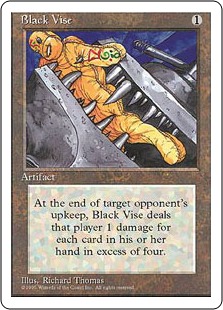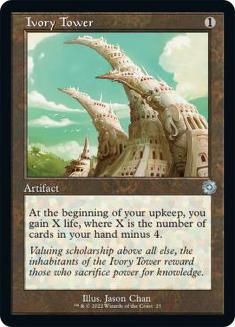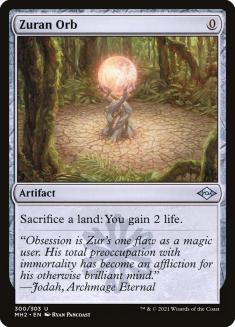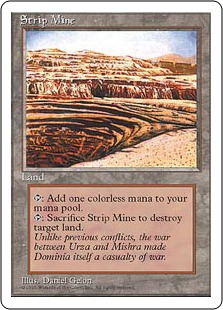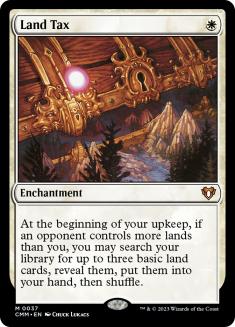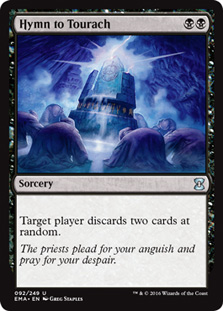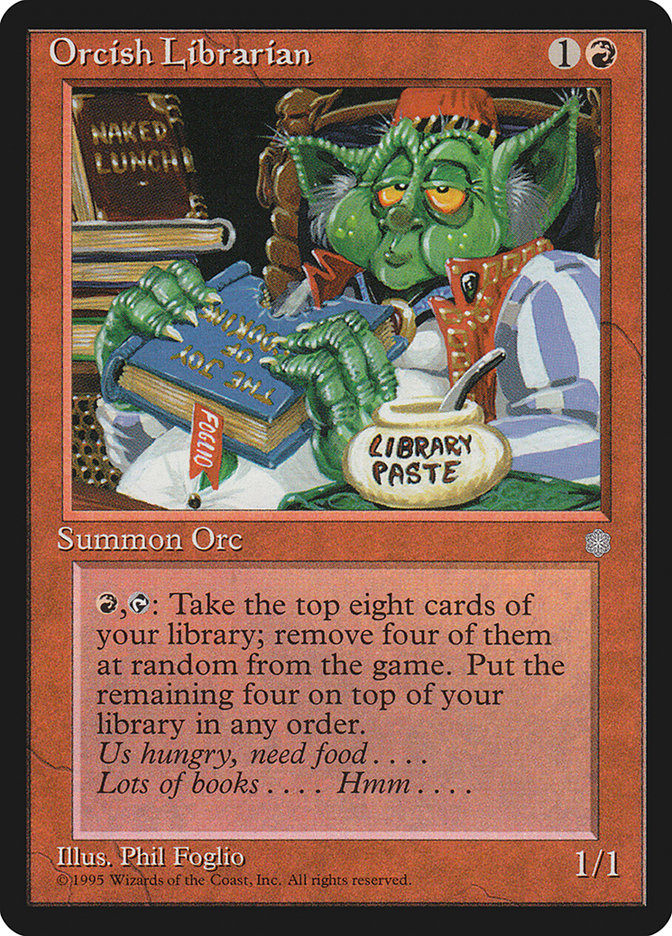Zak Dolan
Alexander Blumke
Tom Chanpheng
Jakub Slemr
Brian Selden
Kai Budde
Jon Finkel
Tom van de Logt
Carlos Romao
Daniel Zink
Julien Nuijten
Katsuhiro Mori
Makihito Mihara
Uri Peleg
Antti Malin
Andre Coimbra
Guillaume Matignon
Jun’ya Iyanaga
Yuuya Watanabe
Shahar Shenhar
Magic is older than its current world champion.
The Pro Tour has come a long way since its origin as the “Magic: The Gathering Black Lotus Pro Tour.” The game has grown so far beyond what almost anyone
dared dream back then.
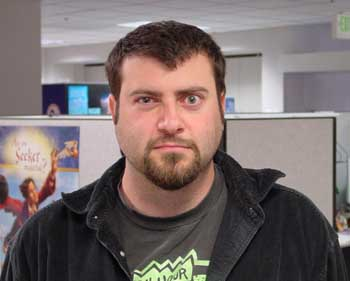
Didn’t there used to be six Pro Tours? If Magic is so much bigger, why are there less Pro Tours than in 1996?
A lot of people don’t realize it, but first place for winning a Pro Tour these days is actually significantly more than the entire prize pool of the first
Pro Tour. That’s right, PT 1’s entire prize pool was $30,000. If I recall, it didn’t even pay down below top 8!
Now, first place isn’t just the $40,000 up front. You’re instant Platinum for the rest of the year and all of next. Pro Tours alone, that’s $14-$24k in
appearance fees, not to mention a plane ticket and hotel for every PT, GP appearance fees, and an invite to the World Championships.
All-in-all, a Pro Tour win pays about $80,000, these days.
So yeah, while there was once six Pro Tours a year, there is far more money awarded at the four a year, we have now than there ever was in the six-years,
which doesn’t even include the World Championships, the Magic World Cup, or the countless Grand Prix we have now.
While Magic may be 21, and the Pro Tour 18, the internet isn’t much older. It certainly wasn’t anything remotely like what it is today. When the Pro Tour
was founded in 1996, there were just 36 million people in the world online. Google wasn’t even a thing until the third year of the Pro Tour!

By the year 2000, that number had increased ten-fold, to over 360 million. Today, over 2.8 billion people are online.
Nowadays, there’s no shortage of people talking about any and everything online. As you start to go backwards in time, however, it quickly becomes clear
that there just isn’t a ton of information online about the early days of the Pro Tour. Remember, the World Wide Web wasn’t even in existence until the
early nineties. Compared to most things, Magic was actually at the cutting edge of “getting online.”
Sometimes, I’ll try to look up some information, such as what the decklists were for the top 8 Type 1 (Vintage) decks at the Type 1 Pro Tour in Dallas back
in 1996 only to discover they are nowhere to be found. Many people don’t even realize there was a Type 1 Pro Tour! The winner? Scott Johns, armed with Kird
Apes and Serendib Efreets.
I can’t stand the thought of so much of our rich history being forgotten. Today, I’d like to share just a few random stories from my first year on the Pro
Tour. If you’ve got any stories from that era to share, I’d love to hear them or be linked to them.
Pro Tour Dallas 1996: Standard With a Restricted List
Ahhhhh, Dallas…
My first Pro Tour was the moment my entire life changed.
It wasn’t just seeing so many of my heroes that I had read about come to life. It wasn’t just rising to the challenge and succeeding on the global stage.
It was discovering a world where I belonged, a world that made me thrilled to be alive. It was a world full of all sorts of interesting and intelligent
people from all over the globe and all walks of life, brought together with a common purpose. I had always felt like an alien, but here, I had found my
people.
The Pro Tour itself was Type 2 (Standard), the last Standard Pro Tour to feature restricted cards (rather than just a banned list like today). The
restricted list?
Dallas Standard Restricted List:
The following month, all seven of these cards were banned and Standard hasn’t had a restricted list since.
For my part, I played in the Junior Division (back when it used to mean something, damn it…), though in retrospect, I was a bit hoodwinked. When I went to
play in my first PTQ, I wanted to play as an adult but was told I was supposed to be in the Junior division since I was under eighteen. That wasn’t true,
of course, but at least I played against adults all weekend. See, the way they did it was just have everyone play against each other, then cut to the top 8
adults and the top 8 juniors. I X-0’d the PTQ easily.
I flew down to Dallas thinking I was going to play W/U/R Browse-Digger. The night before the event, Andrew Wills and I were just playing a few random
games. He had built a number of decks copied from thedojo.com, the original Magic Webite, a site that very few people had ever even heard of. One of these
decks was a Mono-Red Sligh deck, the original mana curve deck invented by Jay Schneider.
After demolishing his Necro deck, it seemed easy to dismiss the red deck. After all, it’s not a real deck, right? Just to get some practice, I tried the
Browse deck against it. It was a massacre.
We locked eyes.
Are you thinking what I’m thinking?
We instantly started laying the deck out, discussing card choices and generally trying to play up the elements that looked most impressive. I even managed
to convince him to let me get a Ball Lightning in there. Gotta put the fear of God into people!
Why only one?
Putting the first one in was a major breakthrough! You gotta remember, this is before anyone had ever top 8’ed a Pro Tour with a Mono-Red deck. “Goblin
deck” used to be a joking derogatory term for a deck that had no business in tournaments.
Once settling on a list, we ran downstairs to try to acquire the missing cards. It’s not like we just showed up to Dallas with Orcish Librarians and
Cannoneers. It looked like we might have some card availability issues, but fortunately, some kids had cards for trade. They couldn’t believe their good
fortune to find some fish that actually wanted to trade for Orcish Librarians!
Once actually competing in Dallas, I X-0’ed the Swiss before succumbing in the top 4 to Jeremy Baca’s Mono-White Prison deck. This was before the so-called
“Paris” mulligan rule, back when mulligans were when you had all land or no land. You could show your hand, shuffle it back, then draw another (as could
your opponent). An opening hand with only Strip Mine for mana went a long way towards derailing my tournament.
Still, $5,500 in scholarship money and suddenly the game I was spending all my time on started looking a lot more legitimate. I had had my first taste of
glory and I wanted more. I wanted to win a Pro Tour, and I wanted to be the Magic World Champion. I had always fantasized about it, but suddenly it was
clear: this was a real possibility, this was something I could actually imagine being reality.
Pro Tour Los Angeles 1997: Mirage-Mirage-Visions Rochester Draft
The Queen Mary was once an ocean liner that has now been converted into a hotel in Los Angeles.
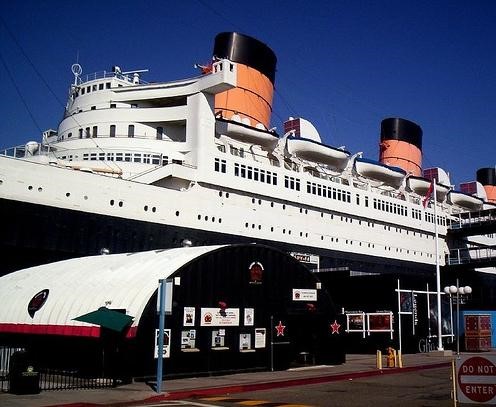
The site of the first Pro Tour LA a year prior, this was the first time a Pro Tour location was repeated. It quickly became a tradition, which was cool in
some regards though less than perfect in others. It was awesome having this location so rich with history, it just isn’t physically ideal for holding a Pro
Tour. I gotta admit, it’s also a little weird that some of the Pro Tour LAs blur together for me. The easiest way for me to remember which one was which is
to remember which cards we were playing, but even still, they kind of flow into one chain of memories.
I still remember the scramble to try to acquire legal guardians at each event. In Dallas, Andrew Wills had accepted responsibility as my guardian. Now, in
LA, Cathy Nicoloff adopted me. While it was just my second Pro Tour, I was already heavily immersed in the scene thanks to mIRC chat room #mtgpro.
This was the first Pro Tour to actually use the “Paris” Mulligan rule (not the following Pro Tour in Paris, as the name would lead you to believe). This
was also before tournament rules had been rigorously iterated on. For instance, at this event, wins were worth two points and a draw one point.
As you can imagine, this lead to a lot more draws than otherwise would take place. In fact, one of the 3-0 tables all intentionally drew into day 2,
starting off 3-0-3. Even with the slanted draws, I do think this was still a poor move on their part, at least for the purposes of winning the Pro Tour.
However, part of their motivation was the complex invitation policy for securing future invites.
Drafting Mirage-Mirage-Visions was particularly notable in Magic’s history, as it was the first major Draft-only tournament to use only sets designed to be
drafted. The previous Pro Tour LA was 4th-4th-Homelands-Homelands Draft, so that was obviously weird.
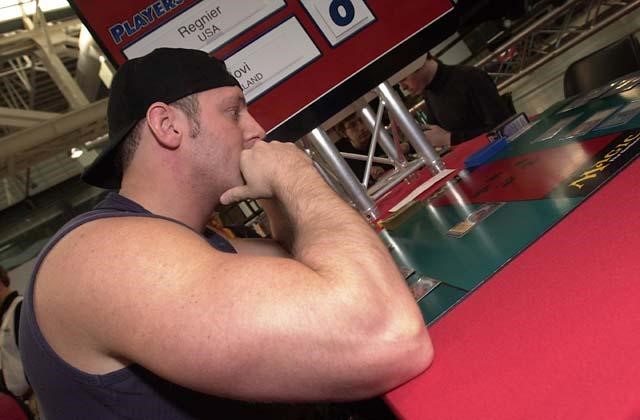
Then, Pro Tour Atlanta 1996 had been a Mirage only Sealed Deck Prerelease Pro Tour. A cool concept, though seriously flawed in how incredibly unfair it was
that some people had much better advance information about what was in the set. A Prerelease where most people know literally zero and some people know
more than half the set is just not a realistic competition.
Pro Tour LA 1997 was actually the first Rochester Draft Pro Tour, a Draft format that used to be fairly popular but was phased out due to problems with
collusion and how much longer it takes to run (the drafts themselves last more than twice as long, more often three times as long).
It was an excited time to draft Magic, at least partially because of the overwhelming innocence of the community at large. I don’t mean innocence as in
they were angels, but rather nativity in drafting. People had no idea how much land to play, let alone what kinds of cards were good. Everyone knew red
X-spells were good, and that was about as far as theory got. In fact, there were only a few spots in the world that had a critical mass of good drafters.
The East Coast including NY/NJ/Boston/Virginia, Southern California, and the Midwest were just about it. Beyond that, there would usually just be one or
two good drafters, and they would have to make due with whatever locals they could get to flesh out drafts.
You know that experience of remembering when Craw Wurm was awesome? That’s what every draft was like! There were literally 50 drafters in the world that
weren’t terrible!
Of course, innocence is a funny word for players in that era, as I’d say about a third of the players cheated in some capacity, even if they didn’t
consider themselves to be cheating. There just used to be very differing perspectives on cheating, with some people believing that it was akin to fouling
someone in basketball. If you got called on it, you got penalized and you moved on.
It feels like every Hall of Fame voting season, there is some amount of narrative about “cleaning up the wild west days.” The wild west element refers to
how often it was confusing if there were even rules. Often, it felt like those of us that strictly adhered to the rules were effectively penalized, as
others that were a lot more cavalier with interpretations of the rules got away with stuff that shouldn’t be okay.
Team Dead Guy–Chris Pikula, David Price, Tony Tsai, Worth Wollpert, and David Bartholow–really were a driving force in shunning cheaters and making it
uncool to be shady. It wasn’t catching cheaters that was the really important thing, it was changing the mentality of the community as a whole. Magic never
would have grown into the massive culture, the rich experience it is today if not for the efforts of these men and other ambassadors that worked tirelessly
to change the way people viewed Magic tournaments; talking with all of the young guys, making sure to help shape the next generation of Magic players into
one that believed that cheating at Magic was akin to stealing.
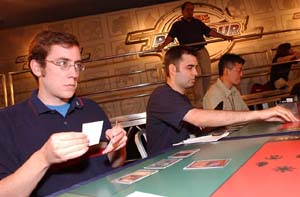
My results at Pro Tour LA 97? The first of many 11th place finishes and the realization that the Pro Tour was focusing more and more on the adult division.
In fact, the next Pro Tour (Pro Tour Paris) was not only going to be the first Pro Tour overseas, it was also going to be the first Pro Tour without a
Junior division. If I was going to play (which I certainly was), it was going to have to be as an adult (despite being just 16 years old and one of the
youngest guys on the Pro Tour).
I actually returned to the Queen Mary in early 2010. It was surreal, to say the least. So many memories. I had originally wondered if it might be sweet to
have another Pro Tour back there sometime. You know, just for old time’s sake. Going back, after all these years, would have a lot of emotional
significance.
Of course, once I walked around inside again, I couldn’t help but notice it sure is a lot smaller than I remember…
Pro Tour Paris 1997
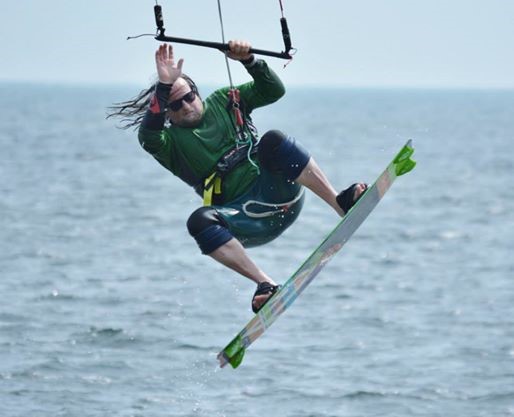
Playing in my first adult Pro Tour, I had finally convinced my parents to let me travel out of the country to play Magic. How did I convince them? Well,
I’d be chaperoned by the highly reputable Eric D. Taylor, one of the godfathers of Magic strategy and a friend I had been testing with since before there
was a Pro Tour.
Nothing was going to go wrong, and if it did, EDT would be there.
And my mom totally believed it!
Lo and behold, I lost my passport. A broke sixteen-year old kid stuck in France for a week without a passport could have been a real situation.
Fortunately…
“Have fun in France. I’m going back to America.” -EDT
And then he was gone.
I was going to have to make due for a week, which was not a trivial undertaking. I didn’t actually have any money and was relying on selling cards and
winning money drafts to make ends meet. I remember thinking how unfair it was that water cost more than wine.
But as fate would have it, one of my childhood heroes, Brian Weissman, of “The Deck” fame, was sticking around France for a little bit to do some
sightseeing with Pro Tour 1 Top 8 competitor and all-around awesome dude Eric Tam.
Getting to do the whole-sightseeing thing was pretty sweet, I have to admit. It was the first time I had ever bombed out of a Pro Tour, and I didn’t know
what to do with myself.
Man! I even had Bloom!
I was literally in Mike Long’s hotel room the night before the Pro Tour comparing notes. Unfortunately, I made a rookie mistake. During the player meeting
the night before the Pro Tour, someone asked if you could Infernal Contract at zero life (since back then, you didn’t die until the end of the phase).
Suddenly, the whole world had the missing link to turn Bloom from a fringe curiosity into a format-defining monster.
What should I do?
What I should have done is just stayed the course and relied on my testing, tuning, and experience. Instead, I switched to a B/R “Anti-Bloom” deck, similar
to Mark Justice’s, though my version was much worse. In one of the most embarrassing card choices of my Magic career, I played Ekundu Cyclops over Talruum
Minotaur!
So, wanting to forget about my first major tournament failure and my missing passport, I traveled with Weissman and Tam to the Palace of Versailles, which
if you’re ever in the Paris area, I cannot recommend enough.
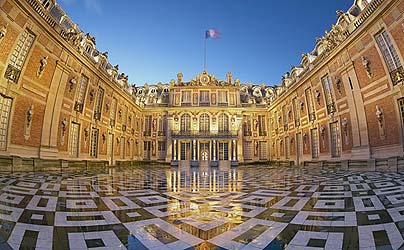
Afterwards, we went back to one of the hotel rooms. Weissman was gushing about Jason Gordan’s U/W Control deck based on Flood Gate. Inspiration: It’s like
Mystical Tutoring for Ancestral Recall!
Then out of nowhere, Jason Zila stumbles in far from awake, bumping into things. He collapses into one of the beds, dropping on the floor the Grixis deck
he had just top 8’ed the Pro Tour with.
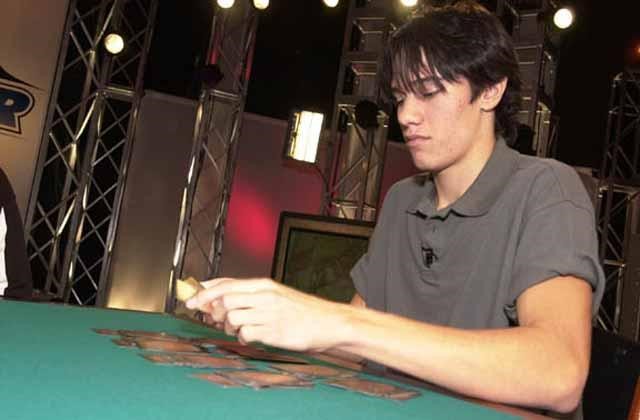
Weissman rushes over, scoops up the Grixis deck, and says it looks like my kind of deck. He wants to show me what this U/W deck is working with, so we get
down to the battles. Of course, Zila’s Grixis deck features Incinerate, Stupor, Shadow Guildmage, Man’o’war, and Nekrataal. Gordan’s U/W deck? Inspiration,
Mangara’s Blessing, Flood Gate, and cheap permission.
I was getting rolled.
Just then, a “before they were stars” Jon Finkel stumbles in half asleep.
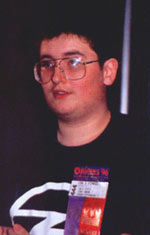
He grunts, then drops his deckbox. He climbs into bed with Zila. Zila, still asleep, rolls over and embraces Finkel. Finkel, also still asleep, wraps his
arms around Zila’s supermodel thin frame like a teddy bear.
The Moral of the Story:
Jason Zila and Jon Finkel’s bodies fit together like Legos.
Finkel, Zila, and myself were three of the youngest guys on the Pro Tour. If you’ve ever met our current world champion, Shahar Shenhar, picture how young
he is. Jon was younger than that. And me? I was barely old enough to drive.

…
Pro Tour Rye 1997 Fifth-Fifth-Visions Booster Draft
After having bombed out of Paris, I did a little second guessing. Maybe I wasn’t actually good enough to play with the big boys? Fortunately, a few drafts
with qualified players and my confidence was restored. It sure did seem like nobody knew what they were doing. I was just going to force blue and get paid
off of the Floods.
See, that format was really screwed up. The colors weren’t even remotely balanced. Blue was totally busted, primarily because it was the best color in
Visions by a mile, and partly because Fifth Edition had one of the most disturbed limited cards of all-time.
Being the best color in Visions was a particularly big deal, as Visions was so much better than Fifth Edition, people generally played more cards from it
than Fifth despite having just one booster. That’s right, your thirteenth best Visions card was usually better than your eleventh best Fifth Edition card.
Because Visions was drafted last, most people would already be locked into colors by the time the third pack rolled around, meaning I could get passed all
of the Man’o’Wars, Undos, Breezekeepers, Cloud Spirits, and Knights of the Mist I could ever want.
My strategy paid off, and I managed to work my way into the top 8, my first adult top 8 and one in which I got smashed. I got cut hard and my deck was a
total trainwreck. Meanwhile, my opponent, Mark Chalice, was getting passed Fireballs and Disintegrates like some kind of hidden camera prank.
Still, I had proven I could cut it in the big leagues. I was a legit professional Magic player, and it was after this event that I decided I really was
going to be a professional Magic player when I grew up.
…
Now, nearly eighteen years later, I have the honor and privilege of competing in the Magic: the Gathering World Championships, held in Nice, France. At
this point, I have competed in all manner of tournaments, big and small, high stakes and low. This one feels different though. I used to sort of take the
World Championships as a given, but now, now it takes so much to even get your foot in the door.
Long before there was a Pro Tour, I read about Zak Dolan’s conquest, then Alexander Blumke, and I dreamed of being the Magic World Champion. Pro Tour
Dallas had me seriously asking, “What if?” After Pro Tour Rye, I began to truly believe in myself. Now, eighteen years later, I have an opportunity to make
that dream a reality, but I’m going to have to go through 23 of the best players in the world.
I’m thankful just to be here and for everything that brought me to this moment, but this is day 1.
This is it.

